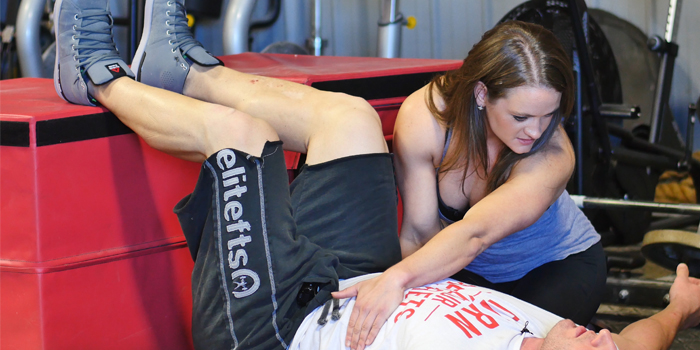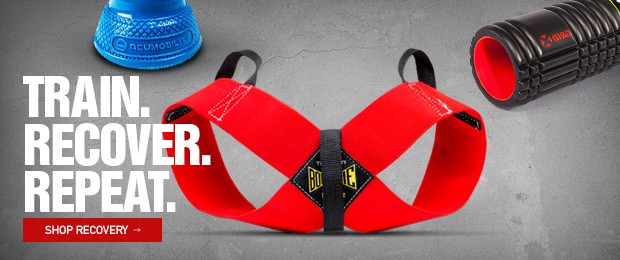
“Everything. And I don’t even know where to start or how to go about organizing any rehab plan.”
I usually open up my consults with a question along the lines of, tell me what’s going on, or what’s causing you to seek my help. “Everything” is a common response I get when I consult with the athletic populations, whether it be powerlifters, bodybuilders, Olympic lifters, or hybrid fitness athletes that combine multiple disciplines.
RECENT: Programming Through Injury: Good, Better, and Best Options
At that point, the scale is tipped.
If you’re reading elitefts articles, training is one of your top priorities. You know that it tips the scale of your life, longevity, strength, and mental health for the better, so you choose to chase it. The net positive is much greater than whatever negatives may come along the way. When the scale tips, that may no longer be true. It’s the equivalent of throwing your hands in the air after having tried most solutions you can think of; a non-verbal, “I have no idea what to do anymore.”
You’re not sure what to be doing, because you’ve modified your (or a client’s) training enough times and had to work around injury enough that you’re feeling like you’ve run out of options. It feels like chaos. What you need is order, or consistency, especially when there are multiple body parts involved. This is why most templates work: People buy a product and follow the guidelines, and for most people, something consistent is better than nothing.
Some really great news for you: There is no one magic exercise, no template or perfect equation, no “one way” to get yourself better. MOST things you would do for yourself, when done with good rationale and consistent execution, will probably help, provided you’re intelligent about how and why your program is organized the way it is. It can be pretty simple.
My role with most my clients is often to provide order to that chaos. I’ve outlined a process you can go through to put together your own program, with a video demo of how you can set things up for success. Bear in mind, this is targeted towards the audience that has the generalized feeling of, “ Nothing is that bad, but I’d like to not feel like I’m falling apart.” If you have a complicated history, significantly altered patterns, or pathological changes, or think you might — consult with a professional.
Principles to Keep in Mind
1. Know your goals
Lateralize here. We’re really good at training goals but put that box away for a moment and be honest with yourself. It might be to have reduced pain with an accessory movement that you know you’d benefit from, or the mobility to get under a low bar squat. For a lot of my clients, their goals revolve around actually feeling good doing low-intensity, daily life tasks like laundry or taking car seats out of cars; think big picture. This may seem obvious, but there’s an exchange that happens with training heavy or hard in anything for a period of time, and the ability to complete lower threshold tasks. While we become efficient enough and acquire enough stiffness at something like a squat or overhead press, it’s not uncommon to have “taken” from basic, day to day abilities to “give” to your sport-related skill (e.g. pressing). Tissue and neural adaptation might behoove you in your sport to a point, up until that same adaptation is over-involved with your sport movement AND your daily life.
2. Complete with intent
Doing anything mindlessly or by just going through the motions will yield mediocre results, at best. One of my first articles on elitefts in 2015 talked a lot about proprioception, “feeling” things work, and moving with intent. That is one of the few principles or thoughts that has stood the test of trial and error. I know you’re busy. I know you have had a week, or a day. Make a choice to show up for yourself and execute with purpose.
3. Like anything, trust the process
You won’t feel night and day difference in a few weeks. Make an up-front contract with yourself to re-evaluate in four weeks and change what you need to. Let the process evolve.
4. Be realistic with your time and effort
Give yourself something to gain traction with. Sit down and estimate the amount of time you expect something to take you, and ask yourself, realistically, if that’s something you can commit to. If you write too much, and try to do ALL the things, you’re probably just fine to take that day’s rehab volume, cut it in half, and turn it into an “A” and “B” routine. Ask yourself when, specifically, in your day you will do some of your daily rehab. The more this gets fleshed out, the easier it becomes to execute.
5. Find someone you trust to give things a once-over, and that you can be accountable to.
This is the biggest piece of your long-term success.
The Process
1. Take your own history
Start to play detective a little bit, and ask yourself, what patterns are you really good at? What do you notice during your training? Have you had any direct soft tissue trauma (muscle or ligament tears)? If so, how did they heal? How does your day-to-day outside the gym feel? How do you think your day to day impacts your mobility and control in the gym? I encourage people to write down five beliefs they have about their body and how it feels. Identifying these ideas (fixed or fluid) is a great way to start peeling off layers. Another great place to start is, “What do I need to do, but keep avoiding?”
2. Determine the biggest areas of opportunity
Take the low hanging fruit. Really. If you “know” you need to do more trunk stability work but think maybe instead you should just “stretch” your hips because it feels better, do the trunk stability work.
3. Come up with progressions/regressions
I can’t believe I’m advocating the use of social media for PT related movements, but the fact is there are SO many resources available, and the use of hashtags has made it easier and easier to find exercises. I can’t say I always agree with “how” or “why” a lot of those exercises are performed, but you need a starting point. The big caveat to this is one of the points mentioned above: Be intentional with your movement. If you’re supposed to be feeling something working and you’re getting totally different muscle groups, it might not be the best movement for you. Let things evolve, and with consistent execution and an objective eye after a few weeks, you can always modify. Is this the “best” option? No. But is it a darn good starting point? Surely. I’ll also come out and say that “textbook” progressions and regressions aren’t always 100 percent accurate — so if you find related exercises presented to progress a certain way, try them individually on your own before you put your program together, and see what you feel.
4. Prioritize and delineate
Once you have your list, provided you’ve also been realistic with how much time you have to give yourself, you can start to put together your program. You can break it up a number of different ways, and be relatively intuitive about it. You may have some things you do daily, plus separate things you work do on upper or lower days, or you might have an “A” and a “B” day that repeat themselves throughout the week. Once you have your progressions and regressions, pick a starting point.
5. Execute with accountability
I have my clients check in with me once a week. I don’t always expect a ton of change in one week, but having the structure in place allows for quick changes as needed, as well as some dialogue about the process and provides them with an experienced brain to have access to.
Here’s a video with some quick examples for you of people who needed “similar” exercises, but different structure:
Is working with a specialist more beneficial? Heckin’, duh. Think of the idea of a good option, a better option, and a “best” option. This article has outlined a process to get you headed in the “good” direction. A better option may be coming up with a plan and finding a professional to spend some time looking at it and consulting with you. The best option would be working with someone one on one to custom tailor everything to you from a large body of knowledge.
RELATED: Stress Management for Growth and Recovery
Working with a professional will probably shorten the course of trial and error, and get you on the right path faster, because there are definite principles at play that we get via education and experience. I don’t want to downplay the role of a really great PT or corrective exercise specialist, especially in more complex or complicated cases, but I also don’t want you to give up on yourself.
I’m tired of hearing athletes say they feel like a lost cause. Your internal narrative is a hugely important data point and projector. You built more strength and agility through your training than you think — you just don’t know how to lateralize it yet. With some structure and consistency, you can probably make some serious progress on your own.
If ever you need a resource for how to put these together or aren’t sure if “what” exactly you need, I’m always available via email at Dani@MergePerformancePT.com.










